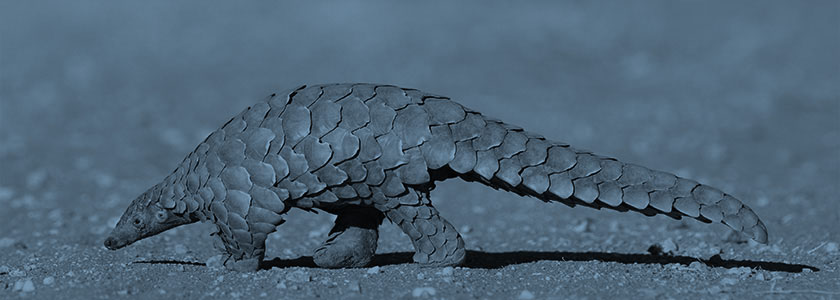Pangolins: 10 Facts about the lovable culprit in the COVID-19 pandemic

No one knows for sure the exact source of COVID-19, but for now, all paws are pointed towards pangolins.
What is a Pangolin?
The pangolin is a scale-covered mammal found in Asia and Africa. They grow up to 3 feet long, mostly come out at night, and mainly eat ants and termites. Because people like this scaly anteater’s meat and because their scales are used in Chinese traditional medicine, they are threatened by poaching and are the most trafficked animals in the world. Of the eight species, three are endangered, three are critically endangered, and the last two are vulnerable.
10 Facts about Pangolins
You’ve likely never heard of pangolins up until now (although Texans may be right for thinking they are the long-lost cousins to the armadillo). Since they are the species of the moment, here are 10 facts about pangolins:
1. The pangolin is covered with large, hardened, overlapping scales made of keratin—the same thing your fingernails are made of.
2. Their tongues are loooooong. Large pangolins can extend their tongues by as much as 16 inches.
3. Most pangolins spend their days curled up in a ball sleeping. They go out at night, when they use their super-strong sense of smell to find insects.
4. Indian pangolins have been known to occasionally walk on two feet.
5. Not only that, but some pangolins are quite good swimmers.
6. Some people like to eat them, but most animals don’t have much luck. Curled into a ball, pangolins are nearly impenetrable.
7. They can also emit a noxious-smelling acid to deter predators.
8. Pangolins tend to be solitary animals, meeting only to mate and produce a litter of one to three offspring, which are raised for two years.
9. In traditional Chinese medicine, pangolins are boiled to remove the scales, which are then dried and roasted. The byproduct is used to stimulate lactation, help drain pus, reduce menstrual cramp pain, and relieve skin diseases.
10. Medical thinking currently posits that this coronavirus originated in bats, who spread it to pangolins, and the infection was speculated to have originated at a seafood and live animal market in Wuhan.
